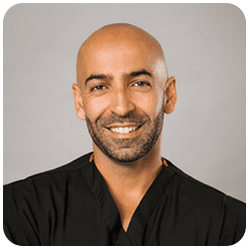Migraine headaches are very common, affecting nearly 40 million Americans — both kids and adults. Often accompanied by nausea, vomiting, and sensitivity to lights and sounds, migraine symptoms can last for hours or days, taking a big toll on your quality of life.
At Pacific Pain and Regenerative Medicine in Irvine and Los Angeles, California, Hasan Badday, MD, helps patients manage and even prevent migraine symptoms using state-of-the-art treatments designed to stop pain in its tracks.
Many migraine headaches are caused by triggers in your environment. Here are seven triggers you should know about, along with simple ways to manage them.
1. Foods and food additives
Food sensitivities are common migraine triggers, and not all triggers affect people in the same way. Foods most commonly associated with migraine onset include those that are high in food additives, like monosodium glutamine (MSG) or artificial colors, sweeteners, or flavors.
What to do: Keeping a food diary and tracking reactions after meals can be especially effective in pinpointing problematic foods. Incorporating fresh foods and reading labels is another good way to steer clear of artificial additives.
2. Hormonal changes in women
Nearly three-quarters of migraine sufferers are women, indicating that fluctuating levels of estrogen could play a role. What’s more, many women find they have more symptoms during or around their periods (“menstrual migraines”).
What to do: If you tend to have more headaches during specific times of your cycle, using hormonal forms of birth control may help. These migraines also respond to the same medications and treatments as non-menstrual migraines.
3. Stress
About 70% of migraine sufferers say stress is a potent trigger for their symptoms. Unfortunately, learning to manage stress can be challenging, especially if your schedule is especially busy or demanding.
What to do: Making lists, prioritizing, and taking steps to manage your time can go a long way toward limiting stress and anxiety. Set aside “me time” every day to do something you deeply enjoy. Consider taking up yoga, meditation, or simple deep-breathing routines.
4. Lack of sleep
Poor sleep habits is another major cause of migraines for many people. Both too little and too much sleep can trigger migraines, illustrating that it’s the quality of sleep that counts, not the amount.
What to do: Set a regular bedtime and stick to it. Aim to get 7-8 hours of sleep every night. Keep electronics out of your bedroom, and try reading or listening to music before sleep instead. Invest in room-darkening window treatments, and keep the temperature in your bedroom on the cool side.
5. Alcohol
Most people associate red wine with migraine symptoms. The fact is, if you’re sensitive to alcohol, any alcoholic beverage can be problematic. Drinking too much alcohol can also lead to dehydration, another migraine trigger.
What to do: If alcohol is one of your migraine triggers, avoiding alcoholic beverages and foods with high alcoholic content is the best way to prevent an attack. Depending on your level of sensitivity, you may be able to indulge on occasion, but again, know your limits and don’t exceed them.
6. Lights and noises
Bright lights are a common trigger for many people (a condition called photophobia). In fact, sensitivity to light is a symptom used to diagnose migraines. Pretty much any bright or glaring light — natural or artificial — can trigger migraines in people who are photophobic. Flickering lights can also be problematic.
What to do: Use sunglasses whenever you’re outside, and for indoor use, consider getting glasses with photochromic lenses that tint automatically as the surrounding light changes. Indoors, try to sit near windows, and avoid bright environments and harsh, direct lighting.
7. Odors
Osmophobia (hypersensitivity to certain smells) is another common migraine symptom. If you have osmophobia, certain odors can cause nerve receptors in your nose to overreact, triggering migraine symptoms like pain and nausea.
What to do: Try to limit your exposure to perfumes and colognes. When possible, avoid cooking areas, especially when strong-smelling foods are being prepared. Like food triggers, odor triggers can vary considerably from one person to another, so it’s important to identify the odors most likely to trigger your symptoms.
Tame your migraines
There may not be a cure for migraines (yet), but there are safe, effective ways to manage the pain and even avoid or lessen attacks. To learn how our team can help you manage your migraines, book an appointment online or over the phone at our Pacific Pain and Regenerative Medicine office closest to you today.









